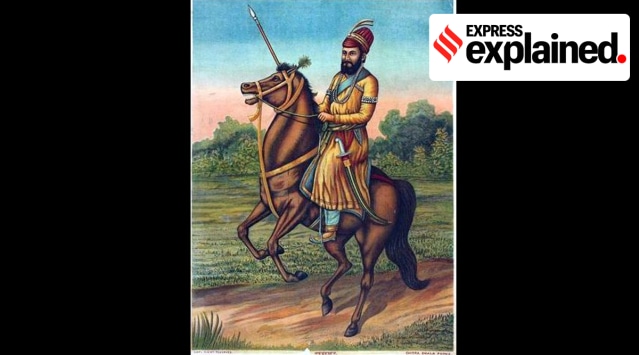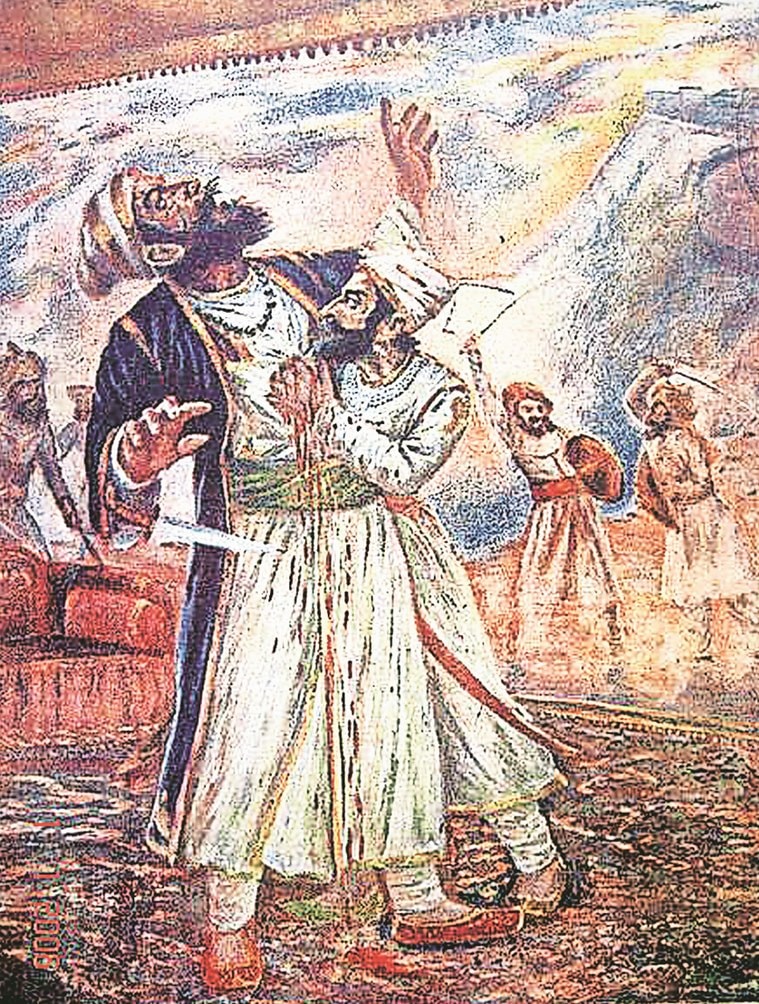Latest Comment
Post Comment
Read Comments
 According to Sir Jadunath Sarkar’s authoritative book 'Shivaji and his Times', Afzal Khan put together a force of 10,000 cavalry and marched from Bijapur to Wai, plundering Shivaji’s territory along the way to subdue his rise. (Photo via Wikimedia Commons)
According to Sir Jadunath Sarkar’s authoritative book 'Shivaji and his Times', Afzal Khan put together a force of 10,000 cavalry and marched from Bijapur to Wai, plundering Shivaji’s territory along the way to subdue his rise. (Photo via Wikimedia Commons)The Supreme Court on Friday (November 11) sought reports from the district collector and the deputy conservator of forests of Satara district in Maharashtra, on the demolition drive conducted around the tomb of Afzal Khan, a 17th-century commander of the Adil Shahi dynasty of Bijapur.
These reports should indicate the nature of the structures and whether due process was followed in removing the alleged unauthorised structures, the court said. A bench of Chief Justice D Y Chandarchud and Justice Hima Kohli was apprised by the Maharashtra government that the demolition drive was over and illegal structures built on government and forest land were razed.
The Hazrat Mohammad Afzal Khan Memorial Society, which has looked after the tomb since the 1950s, moved the Supreme Court through advocate Nizam Pash, seeking protection for the monument. However, Satara District Collector Ruchesh Jaiwanshi said that the administration has removed “all the unauthorised structures that had come up around the grave of Afzal Khan”. On Thursday, the bench had agreed to hear an interim plea seeking a stay on the demolition.
In the early hours of Thursday, officials of the Satara District administration went to the fort constructed in the mid-seventeenth century by Maratha King Chhatrapati Shivaji in Pratapgarh with earthmovers and bulldozers. There was a heavy police presence in the area and elsewhere in the district.
The administration was there to demolish the “unauthorised structures”, constructed around the medieval tomb of Afzal Khan. Khan was killed by Maratha king Chhatrapati Shivaji Maharaj near the Pratapgarh Fort in Satara and a tomb was built there later.
The Bombay High Court’s 2017 orders, in response to petitions by Hindu right-wing organisations that “unauthorised structures” around the tomb be removed, were cited for the action. As per the administration, since the early 1990s, additional structures – including pucca structures – were constructed at the spot. The High Court orders pertained to their removal.
The action was incidentally carried out on the 363rd anniversary of the killing of Afzal Khan by Shivaji, celebrated by admirers of Shivaji Maharaj as ‘Shiv Pratap Day’, and was seen as a major win for the Hindu groups in Maharashtra.
With Shivaji’s rise and increasing control of the region, Afzal Khan was seen as the man to subdue him in the Deccan. According to Sir Jadunath Sarkar’s authoritative book ‘Shivaji and his Times’, Khan put together a force of 10,000 cavalry and marched from Bijapur to Wai, plundering Shivaji’s territory along the way. Shivaji called a council of war at the fort of Pratapgarh, where most of his advisers urged him to make peace. However, Shivaji was not eager to back down and he set up a meeting with Khan.
Although there’s a dispute on the minute details of how Afzal Khan was killed on November 10, 1659, among Maratha and Adilshahi sources, what’s uncontested is that during the meeting, an embrace between the two turned into an attack in which Shivaji emerged victorious. This was followed by a rout of the Adilshahi army at the hands of the Marathas.
 A picture of Afzal Khan’s tomb, published in D B Parasnis’s 1916 book, Mahabaleshwar. (Express)
A picture of Afzal Khan’s tomb, published in D B Parasnis’s 1916 book, Mahabaleshwar. (Express)
As per Maratha sources, Khan’s remains were buried at the fort and a tomb was constructed on Shivajij’s orders.
“It was indeed a graceful act on the part of Shivaji to have erected a tomb over the remains of Afzui Khan and built a tower in his honour, which is still known by the name ‘Afzul Buruj’ at Pratapgarh. The sword of Afzul Khan was preserved as a valued trophy in the armoury of Shivaji and his descendants,” said historian D B Parasnis in his 1916 book, ‘Mahabaleshwar’.
Hindu groups, most notably Vishwa Hindu Parishad, have alleged the Hazarat Mohammad Afzal Khan Memorial Society has expanded the tomb by carrying out unauthorised constructions. In 2004, a public interest litigation application was filed by a person named Varsha Laxmanrao Deshpande, demanding the demolition.
The Hindu groups also claimed the Society was glorifying an “enemy of Swaraj” in “Shivaji’s own land” by hosting various activities in the slain commander’s honour.
 (Source: Wikimedia Commons)
(Source: Wikimedia Commons)
What was the Bombay High Court’s order?
In the 2004 PIL, Deshpande contended that in the name of the original tomb of Afzal Khan, certain persons were encroaching upon the land for their personal benefits. Hearing the PIL, a Bombay High Court bench comprising Justice AA Sayed and Justice J N Patel observed in 2007, that “It will be in larger public interest if the respondent state through its instrumentalities removes all unauthorised constructions from this disputed site by following due process of law. ”
Also referring to the forests in the area, the court said, “There is no dispute over the fact that the site is situated within the protected forest and if that is so, the state should not permit the use of the site for non-forest purposes as the same is prohibited under the Forests Conservation Act, 1980, without obtaining permission from the competent authority.”
It asked the Conservator of Forest to file his affidavit in the matter after verifying all the necessary records, on whether any permission was taken from the Forest Department. In 2008, another bench directed the authorities to comply with the 2007 order.
Justice J N Patel and Justice S J Kathawala then heard the matter in 2008, when VHP Activist Milind Ekbote pointed out that a proposal to regularise the “unauthorised construction” was being sent to the state government.
The court observed, “We are quite sure that the state would refrain from regularising any construction on the subject land for two reasons. Firstly, this court has directed the authorities to remove encroachments and that this land in question is forest land and under the Forest (Conservation) Act, forest land cannot be used for non-forest purposes unless permisson of the specially constituted committee under the Ministry of Environment and Forest is obtained….”
In 2010, a contempt petition was moved by Ekbote claiming failure by state authorities in taking action as directed by the HC. As per a 2017 HC order, authorities were asked to comply with the earlier High Court order and submit affidavits on details of the illegal structures and their future demolition.
“If such details are not forthcoming, we would not hesitate to summon the Conservator of Forest and thereafter, he would be personally liable for complete compliance with what this order contemplates and particularly in this PIL,” read the order. In its petition, the Society has claimed that it challenged the HC’s order in the Supreme Court in 2017 and the final orders are awaited.